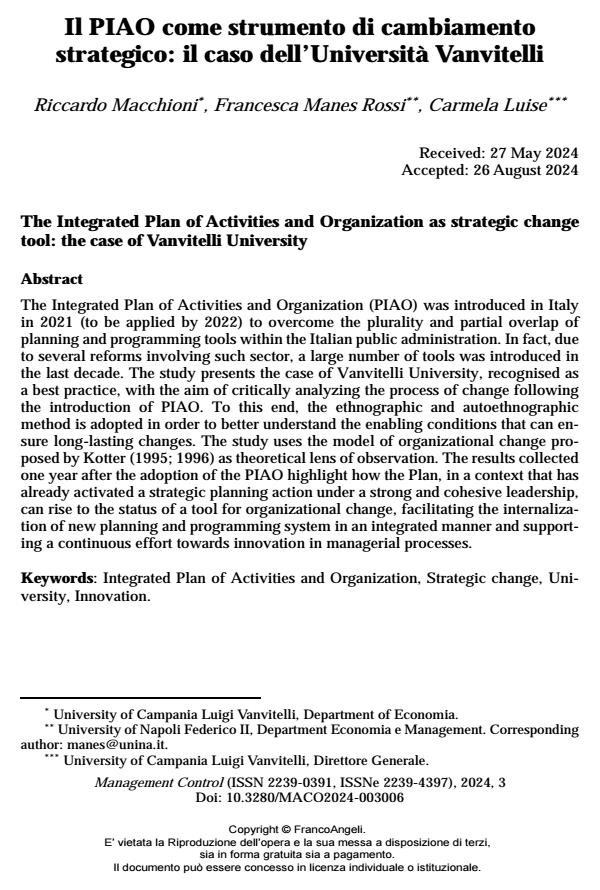The Integrated Plan of Activities and Organization as strategic change tool: the case of Vanvitelli University
Journal title MANAGEMENT CONTROL
Author/s Riccardo Macchioni, Francesca Manes Rossi, Carmela Luise
Publishing Year 2024 Issue 2024/3
Language Italian Pages 19 P. 135-153 File size 173 KB
DOI 10.3280/MACO2024-003007
DOI is like a bar code for intellectual property: to have more infomation
click here
Below, you can see the article first page
If you want to buy this article in PDF format, you can do it, following the instructions to buy download credits

FrancoAngeli is member of Publishers International Linking Association, Inc (PILA), a not-for-profit association which run the CrossRef service enabling links to and from online scholarly content.
The Integrated Plan of Activities and Organization (PIAO) was introduced in Italy in 2021 (to be applied by 2022) to overcome the plurality and partial overlap of planning and programming tools within the Italian public administration. In fact, due to several reforms involving such sector, a large number of tools was intro-duced in the last decade. The study presents the case of Vanvitelli University, rec-ognised as a best practice, with the aim of critically analyzing the process of change following the introduction of PIAO. To this end, the ethnographic and au-toethnographic method is adopted in order to better understand the enabling con-ditions that can ensure long-lasting changes. The study uses the model of organi-zational change proposed by Kotter (1995; 1996) as theoretical lens of observa-tion. The results collected one year after the adoption of the PIAO highlight how the Plan, in a context that has already activated a strategic planning action under a strong and cohesive leadership, can rise to the status of a tool for organizational change, facilitating the internalization of new planning and programming system in an integrated manner and supporting a continuous effort towards innovation in managerial processes.
Keywords: Integrated Plan of Activities and Organization, Strategic change, University, Innovation.
Riccardo Macchioni, Francesca Manes Rossi, Carmela Luise, Il PIAO come strumento di cambiamento strategico: il caso dell’Università Vanvitelli in "MANAGEMENT CONTROL" 3/2024, pp 135-153, DOI: 10.3280/MACO2024-003007